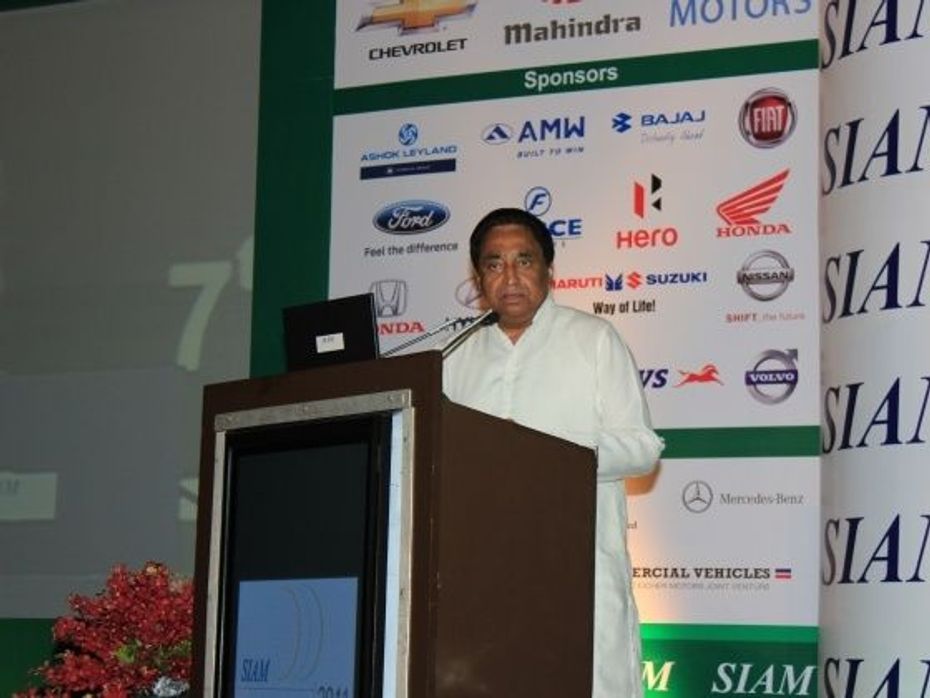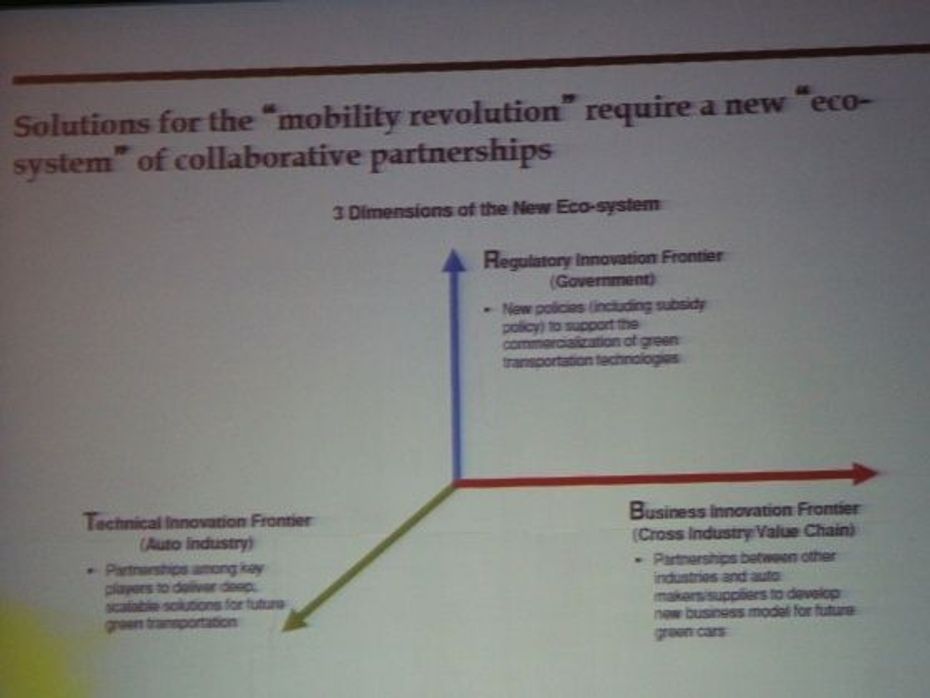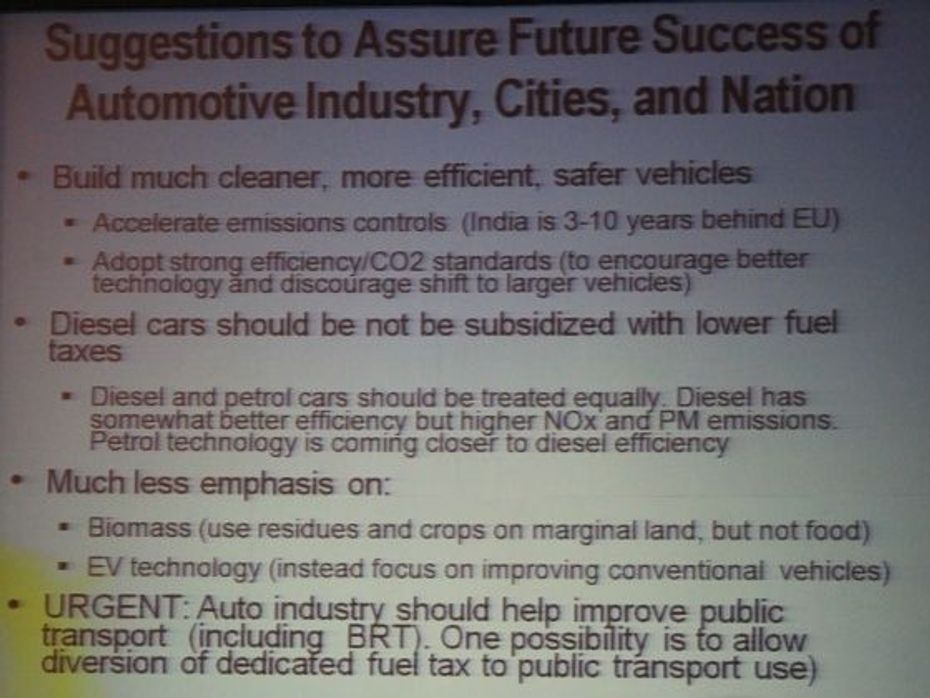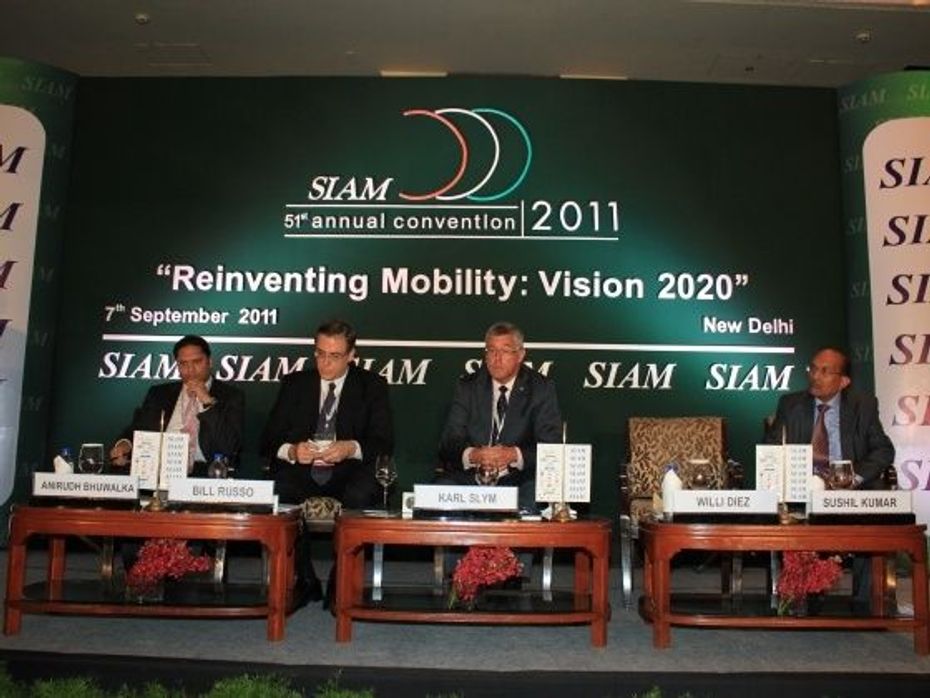
3 New Major Design Details Mahindra XUV 3XO Will Pack Over...
- Apr 12, 2024
- Views : 9869


The Indian automotive industry is once again witnessing a solid slowdown. The cause of this decrease in sales has been attributed to the rise in fuel costs as well as higher interest rates offered by financial institutions. While automobile manufacturers continue to push for growth by launching new products the general atmosphere amongst the top companies is that there is only so much that they can do. To bring about a turn around, the industry will have to usher in bigger changes and cannot expect a few discounts and deals to aid the process. Even SIAM, which earlier predicted a sales growth figure between 12-15 per cent for this fiscal has had to revise their outlook. Right now they are considering an 11-13 per cent growth; however this will only be clear by the end of the festive season in October. Most four wheeler manufacturers are of the notion that the festive season is not going to bring in the numbers that were expected due to the fuel and finance rate hike. In fact, it is highly probable that the industry will manage a 10-12 per cent growth this year, which is nowhere near what the initial expectations were for this fiscal. With a lackluster performance expected from the festive season, which normally witnesses a robust boost in sales across manufacturers, the industry is calling for measures to reverse the slowdown trend.
The automotive industry’s woes mirror the current status of the country as well. While economic growth for the 12th Plan was set at 9 per cent, Montek Singh Ahluwalia, Deputy Chairman, Planning Commission, who addressed the gathering at the annual SIAM conference stated that this was unfeasible and the reality would be around 7 to 7.5 per cent. He did add that this slowdown has been triggered by a global scenario and over the next few months it is possible that the figures might change. In fact the targets set for the 12th Plan are going to be revised next year after taking into consideration current trends.

While the current situation doesn’t paint a bright picture, the automotive industry is bullish about the future and is looking at further global re-alignment in order to bring about a paradigm shift in mobility for the sub continent. Over the last decade, India has been playing catch up with the western markets. Today India is on a brink as the West is weak and India is still strong. Even if our growth rate dips, the fact of the matter remains that the Indian market is still one of the most sought after developing markets in the world thanks to the growth potential that still exists. In fact India has a vehicle density of 15 cars per 1000 people, while countries such as the United States of America have a density to the tune of 800 cars per 1000 people. Further to this, Indian industry is developing a number of products that are suitable for the developing market and these products find relevance in other developing markets as well. This is helping fuel exports and the industry has benefited from this over the last few years and this trend continues to be a strong pillar of growth. Developed markets are looking at the developing world to boost their growth and because of this, a synergy is materializing which has the potential to pave the way forward globally.

While finding avenues to spurt growth is an economic need, there is also a social-environmental concern that is equally strong and therefore needs to be addressed. We cannot just let our country grow at the stake of sacrificing our environment and this has ushered in the need to look at sustainable mobility solutions for the future. While the west has already jumped onto this bandwagon and developed electric vehicles as well as hybrid technologies in order to reduce their burden on fossil fuels, India is yet to take this leap. There is no need to mimic the west, however the Indian industry is at a point where they can skip ahead and actually fuel the trend forward. Manufacturers need to expand on this front and an increasing amount of energy should be spend in coming up with viable solutions for a sustained mobility program. Going green is no more a mantra for gaining goodwill, it is now the need of the hour. We are in an era where fuel costs are only going to rise, whether it is petrol or diesel. To start with, the industry needs to usher in the latest technologies so that cars become more efficient. Further to this, low cost solutions in going hybrid need to be addressed and finally there is the need to go electric. A change in thought amongst automobile component manufacturers is also called for. Component suppliers who have previously not played a major role will need to come forward. Suppliers of batteries is a prime example. With the world going electric, there is the need to develop low cost batteries that can power a car. Right now the lithium-ion batteries are far too expensive to allow for a sustainable model. Electronics are going to play a bigger role, and conventional materials used in construction also need to change towards lighter materials. A leading case in this scenario is BMW who have ushered in such changes with their BMWi sub brand, and the need of the hour is to replicate that line of thought in an Indian context. It is easier said than done, for the Government will also have to align itself with these requirements and help facilitate such development.

While manufacturers can work on the technology, it is the onus of the Government to facilitate an environment that is conducive of such growth. Roads need to improve. With better roads, we can have cars that are lower. Just by lowering the ride height of a car has immense ramifications on its aerodynamics and thus making it more fuel efficient. This is just the beginning. The Government also has to look at making electricity a feasible fuel for the future. Coal driven electricity plants aren’t the answer as this results in just a shift of blame from the vehicle to the coal plant, but the environment still suffers. We need clean electricity and post that the infrastructure needs to come up across the country in order to set up charging stations and charging points. It is a tall order; however, work needs to start in this direction today.
The Indian automotive industry is at the brink of change. Current trends apart, the planning for the future needs to begin today. If implemented correctly, the industry has enormous potential to capitalize on this paradigm shift. The time to reinvent mobility is dawning upon us and its time to get on the bandwagon.

3 New Major Design Details Mahindra XUV 3XO Will Pack Over...

Tata Curvv: A Much Clearer Look At Its Interior Ahead Of Its Unveiling

Citroen Basalt vs Tata Curvv: Exterior Design Compared

10 New Features Expected In The Upcoming 2024 Mahindra XUV 3XO...

The Fronx Has Been Rebadged! Meet The Toyota Urban Cruiser Taisor,...

Here’s How Fuel Efficient The 2024 Maruti Suzuki Swift Sold In...

MG Hector And Hector Plus Blackstorm Edition Launched At Rs 21.25...

Mahindra XUV300 Facelift Teased, Gets A New Name

Citroen Basalt Vision, Its SUV Coupe For India, Revealed
India's largest automotive community